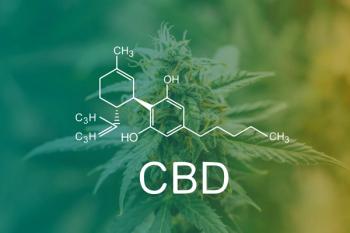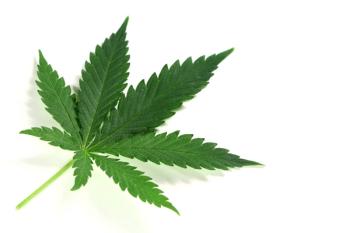
Cannabis Science and Technology
- January/February 2021
- Volume 4
- Issue 1
A Market Overview: CBD Topicals
CBD is a growing industry. In this article, topicals and their growing popularity are discussed.
The market for cannabidiol (CBD) products is ever growing. And within this market are topicals—one of the hottest product formats. The Brightfield Group reported, in 2019, U.S. sales of CBD topicals exceeded $703 million, second only to CBD tinctures. By 2025, topicals are projected to reach $4.5 billion.
During the summer of 2020, CWI Consulting Services—a consumer packaged goods (CPG) planning and development consultancy that focuses on CBD products for the mainstream market—conducted research and gathered data on the topicals CBD market. It surveyed 360 hemp-based topical CBD products from 112 brands. The top 53 brands were identified as market leaders by the Brightfield Group—this group included every company that sold more than $350,000 in topical CBD products in 2019. What’s interesting is sales from the top 53 brands comprised almost 60% of all sales in 2019 in the CBD sector. Furthermore, the top 10 brands—American Shaman, CBD Clinic, CBD FX, CBDMD, Charlotte’s Web, Green Roads, Medterra, PlusCBD, Reliva, and Sagely Naturals—comprised only 36% of sales in 2019.
What’s driving the topicals market? According to CWI, the top-two reasons consumers purchase CBD topical products are pain relief and skin health.
Let’s take a look at some of the key highlights from CWI’s report, CBD Topicals in the USA, including various formulations, ingredients, concentrations, a little on pricing, and a few notes on claims and other regulatory matters. (1)
How Do Users Want CBD Topicals?
When it comes to topicals, the sky is the limit—CBD has made its way into almost every personal care topical format—from lotions to face masks. Lotions and creams largely outweighed all other topical formats, accounting for 43% of all formats. Next was balms, making up 26% of the SKUs. Together, these two categories made up 69% of the topical products reviewed. Other major formats were sticks (7.5%), roll-ons (6%), oils (4%), gels (3.6%), and patches (3%), making up a total of 24.1%.
Curious about size? The most common size for CBD topicals is 2 oz. Next in line are 1 oz offerings. But sizes do vary widely. “The relatively small package sizes suggest that, because CBD products are more expensive than similar non-CBD topicals, and many consumers have yet to try them, brands are balancing quantity with price in order to encourage customers to try these products,” according to CWI.
What’s in CBD Topicals?
The survey results revealed three main types of CBD ingredients used in CPG products: full-spectrum CBD oil, broad-spectrum CBD oil, and isolate, which is 99% or more pure CBD crystals. The survey defined each as the following:
- Full-spectrum CBD oil is a sticky oil that has been extracted from hemp plants, usually using supercritical CO2. It typically contains 70% or more CBD, along with other cannabinoids such as tetrahydrocannabinol (THC) and cannabigerol (CBG), as well as terpenes and other natural constituents of the hemp plant.
- Broad-spectrum CBD oil is full-spectrum oil that has been further processed to have the THC removed to below detectable levels. Though THC can be an important component of cannabis medicines, helping CBD do its job, many retailers and consumers are wary of THC and prefer CBD products without it.
- Isolate is 99% or more pure CBD crystals, created by further purification of CBD oils. Isolate is easiest to formulate with, as its CBD content is consistent, and it does not impart a scent or flavor. However, since it does not include other hemp constituents, consumers seeking a more natural, complete “entourage effect” consider isolate less appealing. It appears as a variety of names such as pure CBD, ISO99 CBD, and pharmaceutical-grade CBD.
Of the three ingredients, full spectrum was the most commonly used CBD ingredient, featured in 35% of all SKUs. Broad spectrum came in second at 21% and isolate at 17%. The fourth most common declared CBD ingredient was hemp extract at 12%. However, CWI said this ingredient suffers from nebulousness and isn’t very helpful to consumers. Finally, “other” made up the remaining 15% of SKUs with unspecified CBD sources.
These percentages changed, however, when CWI only looked at the top 10 CBD topical brands. Broad spectrum was the most common, found in 49% of all the products reviewed, followed by full-spectrum at 26%, and isolate at 11%.
“This observation, in which the top-selling brands prefer broad-spectrum CBD as an input, points to a wariness of the pharmaceutical-like isolate, as well as the THC-containing full spectrum,” the CWI report stated. “This suggests that these brands have found a comfortable middle ground in broad spectrum between the other two major alternatives, each of which has its own marketplace drawbacks.”
Of course, CBD topical products are formulated with other ingredients. And, overall, topical formulations lean heavily on natural ingredients. The top non-CBD ingredients used are coconut oil, water, and menthol. The top essential oils used are peppermint, eucalyptus, and lavender. And the top base oils are coconut, shea, and jojoba. Only 25% of the SKUs used the word organic but none were certified organic.
How Much Do CBD Topicals Cost?
CWI found even though the wholesale cost of CBD has gone down, due to changes in regulations and increased production, the prices of CBD topicals have not. Why? According to CWI, because formulations have gotten stronger. However, 80% of CBD topical products contain less than 500 mg of CBD, with 26% below 100 mg—the lowest was 5 mg; the highest was 3000 mg. Note: 10% of the SKUs surveyed did not specify CBD content and were excluded from this analysis.
In terms of concentration, the most common amount was 5 mg/mL (11%). Most (60%) concentrations were between 1 mg/mL and 7 mg/mL. The mean concentration of CBD in topicals was 9.6 mg/mL and 6.42 mg/mL in the top 10 brands.
Two-thirds of the products surveyed cost between $10-50. Among the top 10 brands, prices tend to be lower. According to CWI’s data, 28% were priced between $10-20, while 25% were between $20-30. A total of 77% were priced between $10-50. What’s interesting about CWI’s findings is that products made with CBD isolate tended to be more expensive than full- or broad-spectrum oils, which is odd given that isolate is the lowest priced of the three ingredients and also the easiest to formulate with.
Say What?
As is well-known, product claims, and more specifically structure-function claims, are highly regulated by the U.S. Food and Drug Administration (FDA). Products that claim to diagnose, cure, mitigate, treat, or prevent any condition, ailment, or disease are considered a drug. Naturally, these regulations also apply to CBD topical products.
Regardless of regulations, CWI’s research found brands use four main ways to communicate CBD’s ability to reduce pain and inflammation:
- Ignore the rules and take a chance—make an “inflammation” or “arthritis” claim
- Make careful, nonspecific claims about products being “soothing” or “revitalizing”
- Formulate with ingredients that are permitted to make claims. For example, lidocaine (1%) can use the claim “pain relief” or “fights pain,” so formulating with it allows for a pain claim to be made, as long as it’s within the guidelines of over-the-counter (OTC) drug rules.
- Use claims that are not formally defined such as “recovery” and “anti-aging”
“The only way for brands to mitigate regulatory risk related to claims is to have all packaging and communications reviewed by qualified compliance professionals who are well-versed in FDA regulations,” according to CWI. “It is clear that far too many CBD topicals brands are skipping this crucial step in product development.”
Conclusion
It’s clear the CBD market overall has a lot going on and more oversight and regulations are needed. Until those rules and governing bodies come in to play, watchdog reports such as CWI’s are here to help the public learn more about the products they are taking. To view the full report,
Reference:
- CWI Consulting Services. “CBD Topicals in the USA: Results and Analysis from a Survey of 100+ Brands” 2020.
About the Author
ALISSA MARRAPODI is a custom content writer for Cannabis Science and Technology. Direct correspondence to:
How to Cite this Article
A. Marrapodi, Cannabis Science and Technology 4(1), 52-54 (2021).
Articles in this issue
almost 5 years ago
Turning the Page to a New Yearalmost 5 years ago
Cannabis Water Report Highlights Opportunities for Water Efficiencyalmost 5 years ago
Connecting Cannabis with the Evolving Needs of the Consumeralmost 5 years ago
Lighting: Setting the Stage for Genetic Potential in Cannabis and HempNewsletter
Unlock the latest breakthroughs in cannabis science—subscribe now to get expert insights, research, and industry updates delivered to your inbox.




